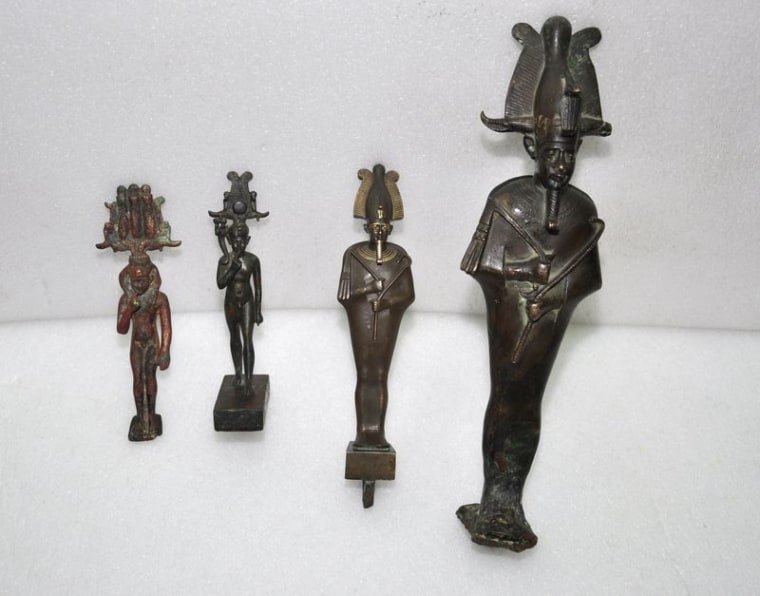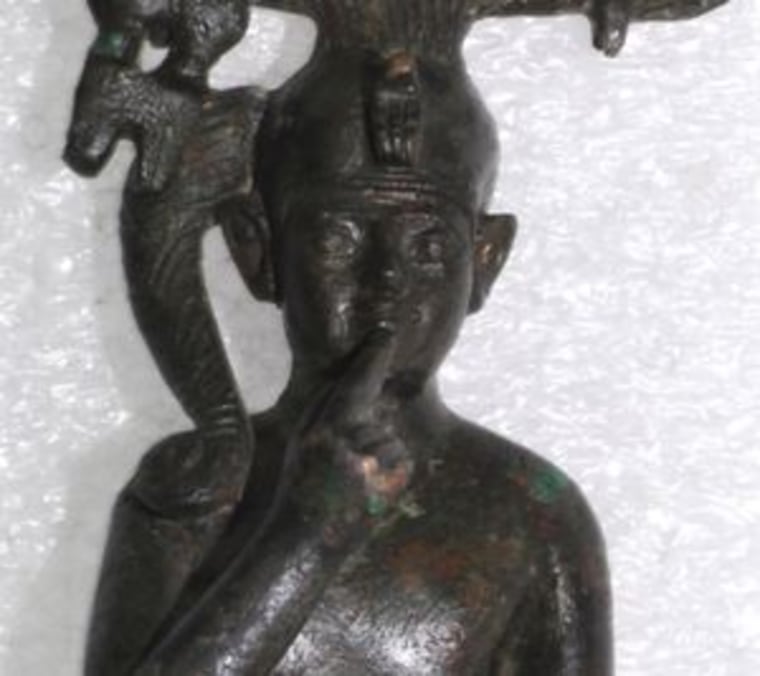Some bronze statues recovered this week in Egypt during a police action, have turned to be a little mystery — well in keeping with the Egyptian deity, the god of silence and secrecy, they represent.
Dating to the Late Period of Egyptian history (around 688-332 B.C.), the four recovered statues were initially believed to have been stolen from the Egyptian Museum in Cairo during the January revolution that brought down President Hosni Mubarak.
But according to a statement by the Ministry of State for Antiquities, a committee of archaeologists who verified the identity and authenticity of the artifacts, discovered that only two of them are actually pieces missing from the museum.
Not much is yet known about the other two.
One of the identified statues, referred as JE 22040 in the Egyptian museum database, is a 14.8-inch-tall "bronze standing statue of Osiris," god of the afterlife.
The other, catalogued as JE 67925, is a 7-inch-tall "inscribed bronze striding statue of Harpocrates wearing the Andjety diadem."
Known in Egyptian mythology as Horus, the child of Isis and Osiris, the deity is shown with his finger in his mouth.
It was a symbol of childhood, but the Greeks who conquered Egypt under Alexander the Great misinterpreted the gesture and adopted him as Harpocrates, the god of silence and secrecy.
As for the other two recovered statues, they are somewhat similar to those stolen at the Egyptian museum. Indeed, they also represent Osiris and Harpocrates.
"I am wondering if they are genuine. If so, I think they have come from a museum collection rather than being freshly dug up antiquities," Paul Barford, a British archaeologist who researches artifact hunting and collecting, told Discovery News.
According to Barford, who runs a blog on the market in portable antiquities, the Harpocrates has apparently corroded in the soil and has been dug up and overcleaned chemically.

"It really looks like the sort of way things would have been cleaned 30 years or more ago," he said.
In fact, the Osiris has a thin layer of oxidation over smooth metal.
"It has been polished by handling. If ancient, this has come from a totally different environment, such as a desert tomb or cave," Barford said.
The committee of archaeologists is now investigating into the origin of the two mysterious statues, "so that they may also be returned to the site or museum they came from," Hawass said.
He added that the other two artifacts, identified as JE 67925 and JE 22040, "bring the total number of items missing from the Egyptian Museum to 31 objects, out of an original total of 54."
Both statues come from room 19 of the museum, which houses a collection of ancient Egyptian deities made of various materials.
"There are at least four more objects missing from this room, two false beards, the Onuris figure and a Bastet cat," Barford said.
Overall, about 1,000 relics have been stolen from museums and archeological sites across Egypt since protests against the government began in January.
